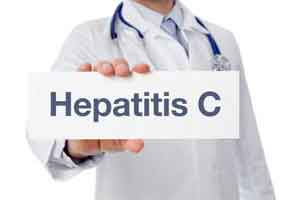- Home
- Editorial
- News
- Practice Guidelines
- Anesthesiology Guidelines
- Cancer Guidelines
- Cardiac Sciences Guidelines
- Critical Care Guidelines
- Dentistry Guidelines
- Dermatology Guidelines
- Diabetes and Endo Guidelines
- Diagnostics Guidelines
- ENT Guidelines
- Featured Practice Guidelines
- Gastroenterology Guidelines
- Geriatrics Guidelines
- Medicine Guidelines
- Nephrology Guidelines
- Neurosciences Guidelines
- Obs and Gynae Guidelines
- Ophthalmology Guidelines
- Orthopaedics Guidelines
- Paediatrics Guidelines
- Psychiatry Guidelines
- Pulmonology Guidelines
- Radiology Guidelines
- Surgery Guidelines
- Urology Guidelines
Direct-acting antivirals reduce risk of liver cancer in Hepatitis C patients: Lancet

In a prospective, longitudinal study the investigators have found that treatment of chronic hepatitis C with direct-acting antivirals is associated with reduced risk of mortality and liver cancer. The direct-acting antivirals are an effective treatment option and they should be considered for all patients with chronic hepatitis C infection. The study has been published in The Lancet.
Around the world, an estimated 71 million people are chronically infected with the hepatitis C virus (HCV). The infection causes complications such as cirrhosis, liver disease, hepatocellular carcinoma, and many people die as a result. Over the last 15 years, these complications have tripled and models predict they will peak between 2030 and 2035.
For ethical reasons a trial with a control arm is not possible and researchers approached this by setting up an observational study of around 10,000 patients. At follow up, about three-quarters had been treated with direct-action antivirals and a quarter was untreated. The incidence of death and hepatocellular carcinoma - the most common form of liver cancer - were significantly decreased in patients who were treated. Their risk of decompensated cirrhosis was not reduced by the treatment.
Previous work has shown there is a reduction of risk for complications and mortality in patients who are treated with interferon or direct-acting antivirals, but few studies have compared treated and untreated patients. The aim of direct-acting antiviral drugs is to achieve a sustained virological response, meaning that the virus is undetectable in the blood of the patients. A recent Cochrane Review found no evidence for or against the treatment having a long-term effect on death and disease, so this large study is timely and may help doctors and patients with treatment plans.
In this study, 10,166 patients were recruited from 32 centres in France. At a median of 33 months, 9,895 patients had available follow up information and were included in the analysis, with 7,344 treated with direct-acting antivirals and 2,551 untreated. During follow-up, 218 patients died (129 treated, 89 untreated), 258 reported hepatocellular carcinoma (187 treated, 71 untreated), and 106 had decompensated cirrhosis (74 treated, 32 untreated).
Overall, the study finds that direct-acting antiviral treatment is associated with reduced risk for global mortality and hepatocellular cancer, but not decompensation of cirrhosis. The researchers initially found an increase in risk associated with treatment with direct-acting antiviral treatment, but once they had adjusted for variables such as age, sex, body mass index, the severity of liver disease, geographical origin, infection route and other factors, they found a reduced risk.
Patients who were treated were 52% less likely to die prematurely than people who were not treated (the estimated adjusted risk of death at one year in untreated patients in the cohort is 84 deaths per 10,000 patients, and in those who were treated was 40 per 10,000), and 33% less likely to present with hepatocellular carcinoma (the estimated adjusted risk of developing hepatocellular carcinoma within a year in untreated patients in the cohort was 129 cases per 10,000 patients, and 86 per 10,000 in people who were treated).
In a subgroup of 3,045 patients with cirrhosis at baseline, the same association was found for mortality and hepatocellular cancer, provided the patients achieved an undetectable level of HCV in their blood. The researchers believe this is because the treatment induces a sustained virological response, allowing the liver to regenerate which decreases risk.
Professor Fabrice Carrat of the Sorbonne Université, France, said: "Taking a large cohort like this provides the opportunity to evaluate the effect of direct-acting antiviral therapy on the long-term outcomes of patients with hepatitis C. We saw a reduction of risk for complications related to the disease, and to mortality, and believe this treatment should be considered for all patients with chronic hepatitis C infection."
In the study, only a few patients underwent liver biopsy to confirm cirrhosis, with platelet levels or prothrombin time - a blood test - used to classify whether a patient had cirrhosis or not. A validation study using other non-invasive markers of fibrosis suggested that their methods correctly classified cirrhosis in the patients.
Patients who received more than one course of direct-acting antivirals were considered to have had continuous exposure, even where there may have been a lag time or if the first course may not have been associated with sustained virological response. This should have underestimated the response to the drugs rather than overestimated them so does not affect the result.
The study excluded patients with a history of decompensated cirrhosis and liver transplantation and these are the patients who would be at highest risk for complications. The potential benefits of treatment in this group could be underestimated because of their exclusion, as trial data shows improvements in liver function in patients with decompensated cirrhosis who achieved a sustained virological response.
For more details click on the link: http://dx.

Disclaimer: This site is primarily intended for healthcare professionals. Any content/information on this website does not replace the advice of medical and/or health professionals and should not be construed as medical/diagnostic advice/endorsement or prescription. Use of this site is subject to our terms of use, privacy policy, advertisement policy. © 2020 Minerva Medical Treatment Pvt Ltd